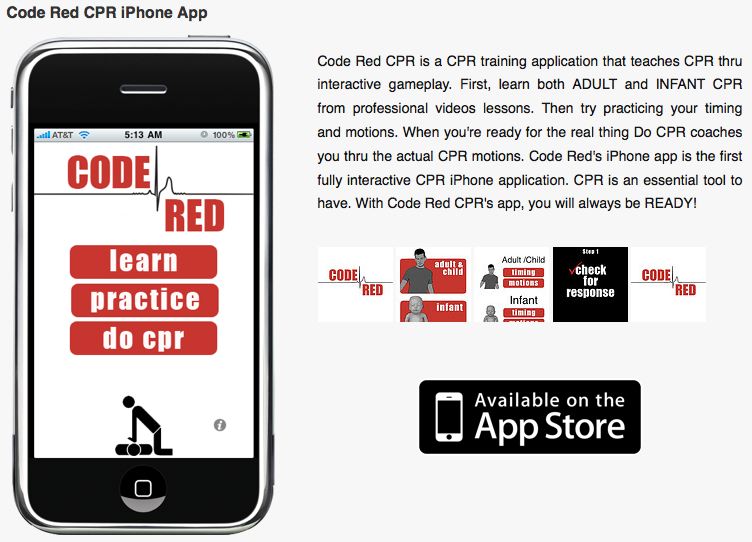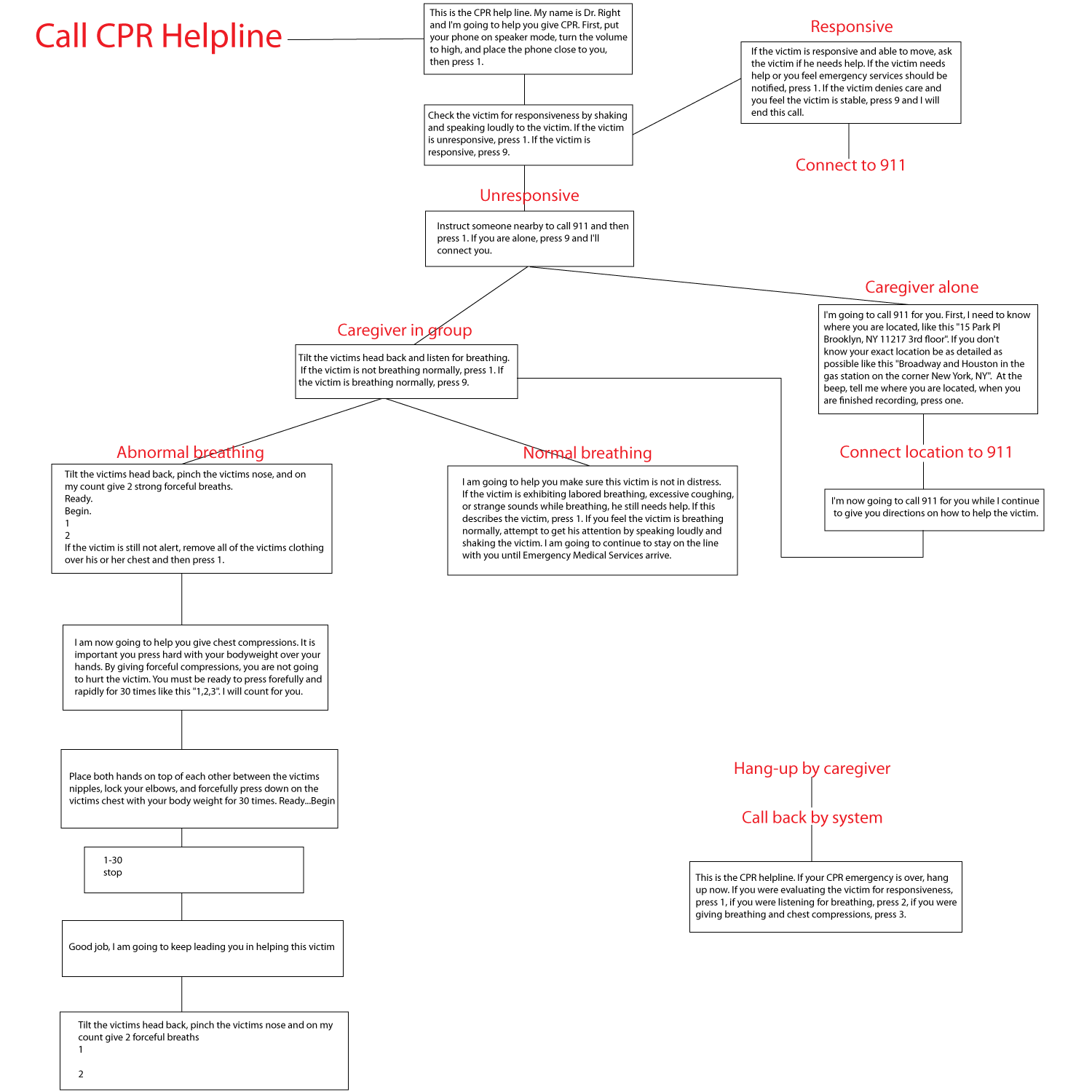 PDF presentation
PDF presentation
***The above number is no longer operational. See videos below for demonstration.
Abstract
How can we better deliver health care in emergency situations? This is the main question that stimulated the CPR Helpline. CPR Helpline is an initial experiment in health care delivery via pre-programmed voice systems. CPR Helpline utilizes VOIP technology via Asterisk. This project serves as my midterm for Redial at NYU/ITP.The CPR Helpline has several goals:
1. To facilitate health care delivery in emergency situations via laypersons (ie. individuals with no prior instruction).
2. To begin to understand the user/interaction requirements and needs in a situation where laypersons find themselves in position of health care delivery.
3. Attempt to provide an effective solution regarding the current lack of professional training in the 911 response system.
Research
In my research efforts I wanted to gain information on the history of CPR as we know it, why we do it, any problems associated with current implentations of CPR within the EMS/911 system, and current applications that attempt to address CPR delivery needs.What is Cardio Pulmonary Resucitation (CPR) and why do we do it?

Full article

In light of the immediacy needed when delivering CPR care, I also researched EMS response times and the ability of 911 operators to deliver CPR instruction over the phone. I found that CPR response times are not federally regulated and the choice to regulate is largely left to local governments.

Full article

My research also found there to be a general lack of cohesiveness between local 911 response systems within a state. Some states, such as Florida, are attempting to remedy this.

Full article
:

I also found that 911 operators are not required to have any type of certification (CPR or any other basic life saving certification) in 18 states. Furthermore, the requirements within states can vary widely among differenct cities, counties, and municipalities. I found several examples of where this has had grave consequences.
Visit msnbc.com for breaking news, world news, and news about the economy

I also wanted to take a brief look at the implementations of emergency response systems in other countries, in particular developing world nations. I found that there is a general lack of emergency response systems in the developing world and that such systems, if they do exist, are both greatly unregulated and also lacking sufficient funding to operate in an efficient manner.


Full article

I also took a broad look at current mobile and and Internet based healthcare tools. This exercise allowed me to gain an understanding in what consumers have come to expect from care delivery over their smart phone or computer. This research revealed numerous smart phone applications as well as numerous web browser applications for use on a web browser enabled phone or computer. I also found several applications that involved the utilization of text messaging for care delivery or instruction. Noticeably absent in my research was any application that primarily relied on voice.

Full article
Process
Upon initial presentation of the CPR Helpline to my Redial class at NYU, feedback was given by the class and my instructor. I started synthesizing this feedback with my ongoing research in an effort to find an area that would make the most sense to prototype a health care voice delivery system. Emergency care situations, in particular CPR, began to stick out at a promising opportunity.Upon further analysis, CPR proved to be a great candidate for automation via a voice system as the CPR evaluation and care delivery process is a very algorithmic one that is designed to be delivered in an efficient manner by a wide range of skill levels (possible with no skill level at all if being actively instructed). CPR also requires a very rapid cadence of chest compressions that is sometimes taught with a metronome in order for students to understand the pace that must be kept in order to help the victim in need. The phone + voice setup seemed ideal for this situation where a consistent and rhythmic counting application could help a potentially novice caregiver deliver effective chest compressions at an appropriate rate.
I also found CPR ideal in that it was a form of care delivery that could be given by virtually anyone. The pathology that it attempts to treat is also very time sensitive and the difference between care delivered immediately and care delivered even seconds later can have dire consequences (see above research regarding EMS response times in correlation with cell death/time unit).
After I completed my initial research and idea presentation + feedback, I began prototyping a voice system using open source VOIP technology, Asterisk. From my early prototypes and initial testing, it was clear that one of the major problems to solve with this type of care delivery/instruction was how much information to instruct the caregiver on at any one time. After several iterrations, I presented my prototype to my Redial class and conducted a Q&A session were feedback was given.
My class brought up many questions regarding the implementation, though, the one question that seemed to resonate most deeply with the class was the issue of how much information should be given at once in order to not overload the caregiver. It was interesting that this had also been one of the main questions in my mind throughout the design/build process. I started prototyping ways to sufficiently inform the caregiver on the "big picture" expectations while also keeping the caregiver focussed on the immediate details of active care delivery. I began to focus on providing the information needed to do the specific step/task required while also having the system articulate a quick example of what will be expected of the caregiver in the current step of CPR delivery. With these changes made, I continued with further user testing.
User Testing
User test #1
Feedback
- Need longer pauses between commands. What happens if I miss command?
- Give instruction on hand positioning on chest
- First time through, give extended instructions and then pare down
User test #2
Feedback
- Increase sound level of system
- Felt like more information was needed to do certain things ie-hand placement
- Wanted to put down phone but couldn't hear reliably hear instructions
User test #3
Feedback
- Want to know how many chest compressions to give ahead of time
- Sound level of system too low to hear
- Want to know how many cycles to do? Do I just keep going?
Product
Below is the logic for the CPR Helpline after considering class feedback, 2 user testing sessions, and incorporation of my research.